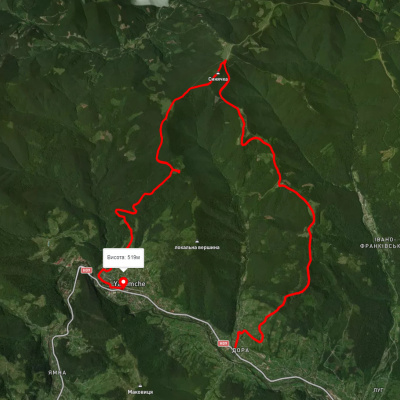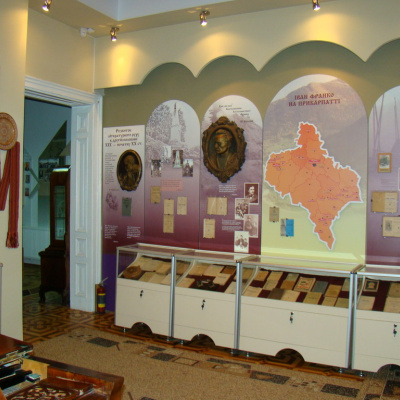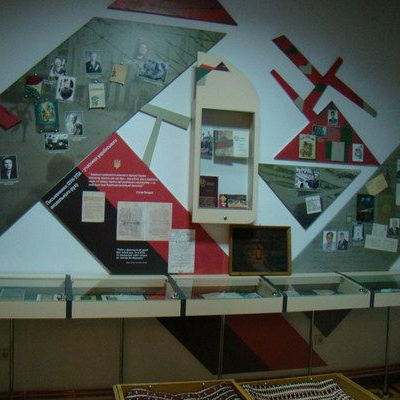Literary Museum of Prykarpattia, Ivano-Frankivsk
The Literary Museum of Prykarpattia has been operating in Ivano-Frankivsk for almost 35 years. It has collected many valuable publications by writers whose work is connected with the Carpathian region. The museum has recently been reconstructed and replenished with a new exhibition of books. The Literary Museum of Prykarpattia was opened on May 16, 1986. Volodymyr Smirnov worked on the creation of this museum for 3 years.
Over the years, the museum has been visited by many people not only from Ukraine but also from abroad. However, over time, the exposition became obsolete. Therefore, by the next franc date, with the help of members of the regional council from the Writers' Union, the Writers' Union itself, and the creative intelligentsia of the region, the museum was reconstructed and the exposition was updated.
Bohdan Hubal worked on updating the museum's design, and the authors of the expositions were writers whose work is connected with Prykarpattia.
The first exposition, designed by Lviv artists I. Turetsky and O. Hnativ, was opened in the year of Ivan Franko's 130th birthday. With changes and additions, it served the public for exactly twenty years. In 2006, to celebrate the 150th anniversary of the giant of Ukrainian literature Ivan Franko, a new exposition was built, which highlights all the milestones of the literary development of Prykarpattia.
The first section of the exposition, which deals with the development of writing in the Carpathian region, opens with a map of finds of the twelfth and thirteenth centuries in the territory of the Galician-Volyn principality. The map is based on archaeological research materials and eloquently testifies to the spread of writing and the existence of schools among the Galicians in those distant times.
In the section "Literary Works of the Times of Kievan Rus and the Principality of Galicia-Volhynia. The Founding and Importance of the First Printing Presses" displays facsimile editions of Sviatoslav's Izborky of 1073 and the Kyiv Psalter of 1397 as examples of manuscript books.
A valuable monument of the Galician literary school is the Galician Gospel of 1144. A copy of a page from the Gospel is on display in the museum. A prominent literary and historical work of the princely era is the Galician-Volyn Chronicle, which began to be created in Halych in the early thirteenth century. Its 1989 edition, translated by L. Makhnovets, occupies a prominent place in the museum's exposition, along with a rare edition of The Word about the Campaign of Ihor Sviatoslavovych, edited by Vasyl Shchurat, which was published in Lviv in the early twentieth century.
Unique exhibits that introduce museum visitors to the founding of the first printing houses in Prykarpattia in Stratyn and Krylos in the early seventeenth century are particularly noteworthy. Well-preserved old prints of the Lviv printing house are exhibited as examples of ancient book printing, namely: "Triodion" of 1664, "Apostle" of 1684, facsimile editions of primers of the sixteenth and seventeenth centuries, including "Primer" by I. Fedorov of 1574. The cultural and artistic heritage of Ivan Fedorov's book printing is enriched by Pamvo Berinda, a native of the town of Yezupol in Prykarpattia. The showcases include copies of the title pages of the 1606 "Gospel of the Teacher" and the 1627 "Lexicon of Slavenoros" - a valuable scientific study that made its author famous.
The activities of polemic writers I. Vyshensky, S. Zyzaniy, and I. Kniahynyckyj are highlighted separately. Rare lifetime editions of Ivan Franko's poem "Ivan Vyshensky" are on display.
The museum's exposition includes a well-known textbook of Church Slavonic Grammar Slovenska (facsimile edition), published in Vilna in 1596 by Lavrentiy Zyzaniy Tustanovsky, a prominent Ukrainian linguist, translator, writer, teacher, and church leader of the sixteenth and seventeenth centuries.
In the section "Literary Movement of the First Half of the Nineteenth Century," visitors learn about the activities of Markian Shashkevych, Ivan Vahylevych, Yakiv Holovatsky ("Russian Trinity") and their followers: Anton Mohylnytskyi, Mykola Ustianovych, and Osyp Shukhevych.
A phototypical edition of the almanac Rusalka Dnistrova, printed in Budym in 1837, initiated by M. Shashkevych, is noteworthy. The almanac became the first swallow of new Ukrainian literature in the Galician land.
Rare editions of the awakeners of the national spirit in Galicia are exhibited: "A. Mohylnytsky's Skit Maniavsky (Przemysl, 1852), Antonii Lubych Mohylnytsky's Letters (Lviv, 1885), and O. Shukhevych's Translations and Imitations (Lviv, 1883).
The section of the exhibition "The Development of the Literary Movement in the Second Half of the Nineteenth and Early Twentieth Centuries" begins with Shevchenko's theme. Taras Shevchenko's first works came to Galicia during the Kobzar's lifetime. In the showcases are Taras Shevchenko's Kobzar (Lviv, 1893, 1894), D. Lukianovych's On Shevchenko's Works (Lviv, 1913), a phototypical edition of Shevchenko's first Kobzar in 1840, and others.
A prominent place in one of the museum's halls is occupied by a section devoted to Ivan Franko's stay in Prykarpattia. The exposition of the literary museum highlights the work of Ivan Franko in all its diversity. Collections of poetry from the writer's poetic heritage are exhibited in the museum's windows: "My Emerald" (Lviv, 1911), "Faded Leaves" (Lviv - Kyiv, 1922), and poetry for children is represented by poems: "Mykyta the Fox" (1934), "Abu Qasim's Slippers" (1895), and others. All works were published in Lviv. Rare lifetime editions of the writer's works are also on display: "Poluika" (1899), "Pantalaha" (1902), "Homeland" (1911), the second, lifetime edition of the novel "Zakhar Berkut", and the play "Stolen Happiness".
An electrified literary map introduces visitors to the places where Ivan Franko lived in Prykarpattia. The new section of the museum's exhibition "Ivan Franko in Stanislav" tells about the writer's stay in our city. Unique publications by the writer's contemporaries are on display, including the first volume of the Ukrainian-German dictionary by the famous lexicographer, educator, and folklorist Yevhen Zhelekhivskyi (1844-1885), published in Lviv in 1886, and a book on the life and way of life of the Hutsuls, Na vysokoi polonyne (Warsaw, 1936), by the famous Polish writer Stanisław Wincenz.
Continuing to explore the exhibition, visitors have the opportunity to learn about the life and work of the Pokuttya Trinity: Vasyl Stefanyk, Mark Cheremshyna, and Les Martovych. Alongside the photographs of these writers are lifetime editions of their works: "The Stone Cross" by Stefanyk (1900), "The Cunning Panko" by Martovych (1903), books by Kobylianska and Kobrynska.
A significant place in the exposition is given to Bohdan Lepko, a Ukrainian writer, scientist, teacher, and painter. The showcases present some of the writer's lifetime editions, which are very rare today. One of these editions is The Fairy Tale of My Life by Krehulets, published in Lviv in 1936.
The museum also highlights the development of the literary process of Prykarpattia in the 20s and 30s of the twentieth century. The showcases include books by Oles Babii, a USS chorunzha, Yura Shkrumeliak, a singer of riflemen's fame, and Andrii Tchaikovsky, a popular and beloved writer of early twentieth-century Galicia.
The literary and artistic organization Western Ukraine operated from 1925 to 1933 in Kharkiv and united more than 50 writers and artists from Western Ukraine who, for various reasons, were living in Soviet Ukraine at the time. Among them were natives of Prykarpattia: V. Atamaniuk, M. Irchan (A. Babiuk), I. Tkachuk, V. Hadzinsky, D. Rudyk, M. Kozoris, and M. Kichura.
Part of the creative work of the above-mentioned writers, as well as photographs related to the organization's activities and writers' work are on display in the museum's stands and windows. The literary heritage of the Ukrainian writer, winner of the Taras Shevchenko State Prize, daughter of D. Makohon, Iryna Wilde, is widely represented in the exhibition.
The section of the exhibition "Writers of Prykarpattia in the Second World War" introduces visitors to the works of writers who were direct participants in the dramatic events of the Second World War. The showcases include frontline photographs and collections of poetry by Y. Bundziak, O. Strelets, H. Hryshko, as well as literature that reminds us today of the Carpathian raid of S. Kovpak's partisan unit: S. Rudnev's Diary of the Carpathian Raid (1949), S. Kovpak's Partisan Paths (1965).
A prominent place in the exhibition is occupied by the poetry of Mykhailo Diachenko (Marko Boieslav, Homon), a singer of the OUN-UPA, in particular, a three-volume reprint of the 1951 underground edition of Marko Boieslav's collection of poems "Disobedient Words", next to the cover of the underground magazine "Black Forest", where the writer was published, a copy of the document of the "Information Bureau of the Ukrainian Main Liberation Council" (UGVR) on awarding Marko Boieslav with the Silver Cross of Merit (the document is dated March 1950), and unique photographic material from the declassified KGB archives.
The showcases also feature the works of insurgent poets, collected in the book Insurgent Lyre (Lviv, 1992). Among the authors: Marko Boieslav, Zenoviy Krasivsky, Marta Hai, Roman Durbak, Volodymyr Terletsky, Bohdan Stefaniuk, and others.
The songs of the Ukrainian insurgents are collected in a separate publication, The UPA Singer (Lviv, 1992), and are accompanied by sheet music. Next to it is a collection of UPA postcards from 1942-1952 (Ivano-Frankivsk, 1992) and a number of publications on the history of the OUN-UPA. Separately, there are publications dedicated to the 100th anniversary of the birth of Roman Shukhevych, the UPA's general and battalion commander, and the 65th anniversary of the UPA.
The museum's exposition highlights another page in the history of Ukrainian literature, namely the works of writers of the Ukrainian diaspora who came from Galicia. Works by writer, educator, and Canadian public figure Ivan Bodnarchuk, poetry collections by Daria Melnykovych-Rykhtytska, and poetry by Bohdan Bory (Borys Shkandriy) are presented.
Main activities: study of literary local history and its popularization among museum visitors.
The Literary Museum of Prykarpattia has 40 thousand exhibits.
Working days: Tuesday through Saturday;
Weekends: Sunday, Monday
Opening hours: from 10:00 to 17:30. Lunch: from 13 to 14 hours.
Accommodation around Literary Museum of Prykarpattia, Ivano-Frankivsk:
Які маршрути проходять повз Literary Museum of Prykarpattia, Ivano-Frankivsk?
Пропонуємо пройти такі туристичні (пішохідні) маршрути через/біля Literary Museum of Prykarpattia, Ivano-Frankivsk: с. Пасічна, через с. Манява, Манявський вдсп., г. Велика Сивуля до с. Бистриця, с. Манява - пол. Монастирецька, с. Дора, через г. Синячка, пер. Пересліп, пол. Туршугувата, хр. Явірник до м. Яремче, с. Дора, через г. Синячка, пер. Пересліп до м. Яремче, с. Дора, через г. Синячка, пол. Чорногориця до м. Яремче, с. Дора, через г. Синячка, хр. Чорногориця до м. Яремче
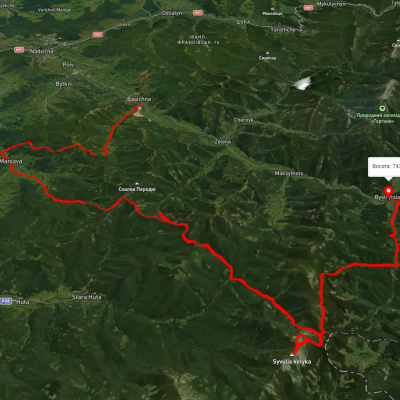
с. Пасічна, через с. Манява, Манявський вдсп., г. Велика Сивуля до с. Бистриця
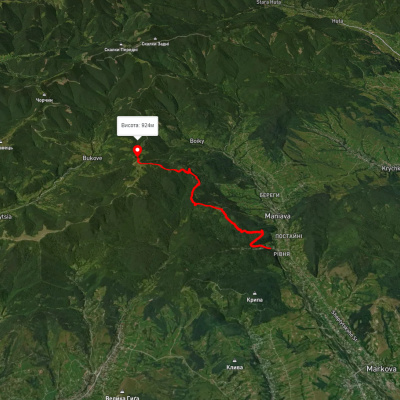
с. Манява - пол. Монастирецька
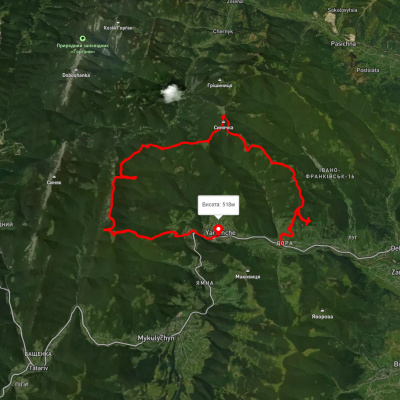
с. Дора, через г. Синячка, пер. Пересліп, пол. Туршугувата, хр. Явірник до м. Яремче
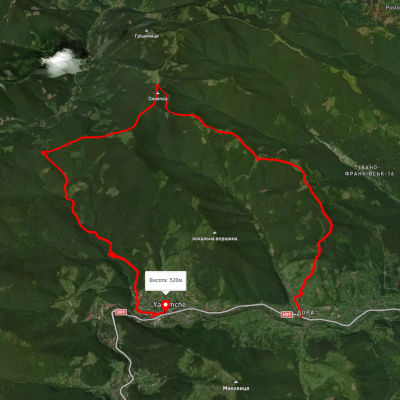
с. Дора, через г. Синячка, пер. Пересліп до м. Яремче
